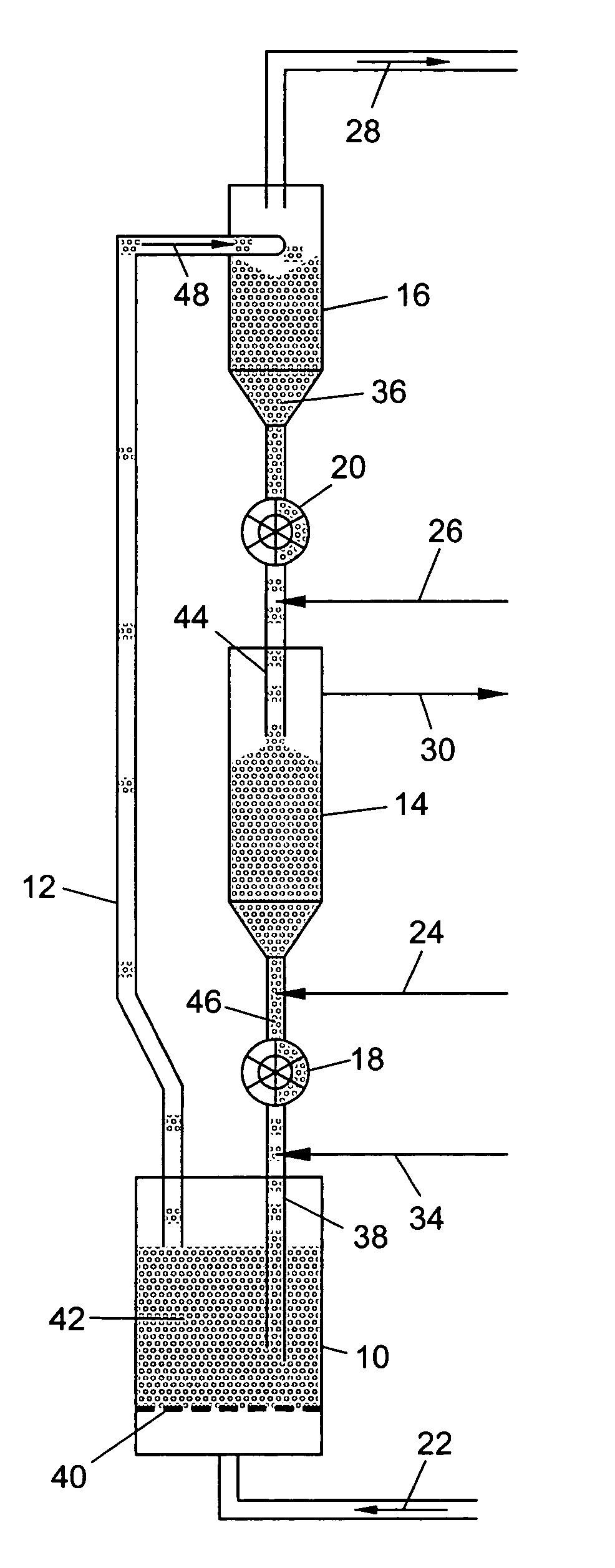Method for preferentially removing monovalent cations from contaminated water
a monovalent cation and water technology, applied in the field of continuous ion exchange, can solve problems such as adding process complexity, and achieve the effect of simple and economical treatmen
- Summary
- Abstract
- Description
- Claims
- Application Information
AI Technical Summary
Benefits of technology
Problems solved by technology
Method used
Image
Examples
Embodiment Construction
[0024]Kinetic studies with ion exchange media dispersed in ion bearing solutions have shown that the rate of removal of cations is proportional to the square root of the product of the cation concentration and the concentration of unused ion exchange media in the reaction volume. The form of the kinetic equation for removal of target ionic species is:
rA=kA(CIXCA)0.5
[0025]Where rA is the removal rate of species “A”, kA is the rate constant and CIX and CA are the respective concentrations of the unused ion exchange media and target ions in solution. Similar expressions can be written for each ionic species in solution, and the relative removal rate for any two species at a given ion exchange media concentration is:
[0026]rArB=kAkB(CACB)0.5
[0027]Since the rate constants kA and kB depend largely on the reaction conditions and transport properties of the fluid, which are the same for both ionic species, the rate constants are approximately equal. Therefore, the initial relative rate of ...
PUM
| Property | Measurement | Unit |
|---|---|---|
| concentration | aaaaa | aaaaa |
| time | aaaaa | aaaaa |
| movement | aaaaa | aaaaa |
Abstract
Description
Claims
Application Information
 Login to View More
Login to View More - R&D
- Intellectual Property
- Life Sciences
- Materials
- Tech Scout
- Unparalleled Data Quality
- Higher Quality Content
- 60% Fewer Hallucinations
Browse by: Latest US Patents, China's latest patents, Technical Efficacy Thesaurus, Application Domain, Technology Topic, Popular Technical Reports.
© 2025 PatSnap. All rights reserved.Legal|Privacy policy|Modern Slavery Act Transparency Statement|Sitemap|About US| Contact US: help@patsnap.com



